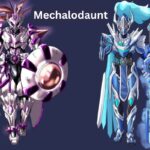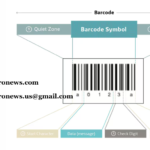Folklore is a rich tapestry of stories, myths, and legends that have been passed down through generations, often serving as windows into the beliefs and fears of societies past and present.
Among the many intriguing aspects of folklore are the tales of possiblyethereal beings—mysterious entities that straddle the line between the tangible and the intangible, the real and the imagined. These beings, whether spirits, ghosts, or otherworldly creatures, have captured the human imagination for centuries, inspiring awe, wonder, and sometimes fear.
In this exploration, we delve into the depths of folklore to uncover the secrets of possiblyethereal beings, examining their origins, characteristics, and enduring significance in cultures around the world.
Origins of PossiblyEthereal Beings
The origins of possiblyethereal beings can often be traced back to ancient beliefs and superstitions rooted in animism—the belief that spirits inhabit natural objects and phenomena. In many early cultures, the natural world was viewed as inhabited by a multitude of unseen forces, both benevolent and malevolent.
These beliefs laid the foundation for the conception of possiblyethereal beings as intermediaries between the physical and spiritual realms. As societies evolved, so too did the stories and legends surrounding these beings, incorporating elements of religion, folklore, and cultural practices.
Characteristics of PossiblyEthereal Beings
Possiblyethereal beings are characterized by their elusive nature and ambiguous existence. Unlike creatures of myth and legend that are firmly rooted in either the realm of the real or the fantastical, possiblyethereal beings occupy a liminal space, defying easy categorization.
They are often described as ethereal or ghost-like, possessing a transient quality that allows them to move between worlds with ease. In some traditions, possiblyethereal beings are depicted as shape-shifters, able to take on different forms depending on their mood or purpose.
Read more articles: Usa Pro News
Others are said to inhabit specific locations, such as forests, lakes, or abandoned buildings, where they manifest as guardians, tricksters, or omens of impending doom.
The Significance of PossiblyEthereal Beings in Culture

Possiblyethereal beings play a significant role in the cultural landscape of societies around the world, serving as symbols of the unknown and reminders of humanity’s enduring fascination with the supernatural.
In many cultures, rituals and ceremonies are performed to appease possiblyethereal beings and ensure their favor or protection. Conversely, tales of encounters with possiblyethereal beings are often used as cautionary tales, warning against trespassing into forbidden territories or disrespecting the natural order.
Additionally, possiblyethereal beings feature prominently in art, literature, and entertainment, serving as inspiration for countless works of fiction and artistic expression. Their enduring presence in cultural narratives speaks to their timeless allure and the enduring power of the human imagination to conjure worlds beyond the realm of the ordinary.
Encounters with PossiblyEthereal Beings
One of the most compelling aspects of possiblyethereal beings is the myriad accounts of encounters with these mysterious entities. Across cultures and throughout history, individuals have reported sightings, interactions, and experiences with beings that defy conventional explanation.
These encounters often occur in remote or isolated locations, where the veil between the mundane world and the supernatural is believed to be thin. Tales of encounters with possiblyethereal beings range from the benign to the terrifying, with some describing peaceful interactions with benevolent spirits and others recounting harrowing experiences with malevolent entities.
Read Also: SSIS 816
These stories serve not only as a testament to the enduring presence of possiblyethereal beings in human consciousness but also as a reminder of the inherent mystery and wonder of the world around us.
The Evolution of PossiblyEthereal Beings in Modern Society
In an age of science and skepticism, the belief in possiblyethereal beings may seem antiquated or irrational to some. However, far from fading into obscurity, these enigmatic entities continue to evolve and adapt to the changing landscape of modern society.
While traditional folklore still plays a significant role in shaping our understanding of possiblyethereal beings, contemporary culture has also given rise to new interpretations and representations of these entities. From ghost stories and paranormal investigations to science fiction and fantasy literature, possiblyethereal beings remain a perennial fascination for audiences of all ages.
Moreover, the advent of digital media and the internet has provided a platform for the sharing of personal experiences, allowing individuals from around the world to connect and exchange stories of encounters with possiblyethereal beings in real-time.
As technology advances and our understanding of the universe deepens, the mysteries of possiblyethereal beings are likely to persist, continuing to inspire wonder and curiosity for generations to come.
Conclusion
In conclusion, the exploration of possiblyethereal beings in folklore offers a fascinating glimpse into the rich tapestry of human beliefs and experiences. From ancient animistic traditions to modern-day urban legends, the stories of possiblyethereal beings continue to captivate and intrigue audiences around the world.
Whether viewed as guardians of the natural world, harbingers of fate, or manifestations of the human psyche, these mysterious entities serve as potent symbols of humanity’s ongoing quest to understand the mysteries of existence.
As long as there are stories to be told and mysteries to be unraveled, possiblyethereal beings will remain a compelling and enduring aspect of folklore, inspiring wonder, awe, and a healthy dose of fear in those who dare to explore the unknown.
Frequently Asked Questions (FAQs) about PossiblyEthereal:
Q1. What exactly are possiblyethereal beings?
Ans: Possiblyethereal beings are mysterious entities found in folklore that exist in a realm between the tangible and the intangible, often associated with spirits, ghosts, or otherworldly creatures. They are characterized by their elusive nature and ambiguous existence.
Q2. Are possiblyethereal beings real or just products of imagination?
Ans: The existence of possiblyethereal beings is a subject of debate. While some believe in their literal existence as supernatural entities, others interpret them as symbolic representations of human fears, desires, and beliefs.
Q3. What are some common characteristics of possiblyethereal beings?
Ans: Possiblyethereal beings are often described as ethereal or ghost-like, with a transient quality that allows them to move between worlds. They may also be depicted as shape-shifters, guardians, tricksters, or omens, depending on cultural interpretations.
Q4. Are encounters with possiblyethereal beings common?
Ans: Encounters with possiblyethereal beings are reported across cultures and throughout history, but their frequency varies depending on cultural beliefs and individual experiences. Tales of encounters range from peaceful interactions to terrifying experiences.
Q5. How do possiblyethereal beings influence culture?
Ans: Possiblyethereal beings play a significant role in cultural narratives, serving as symbols of the unknown and inspiring rituals, ceremonies, art, literature, and entertainment. They embody humanity’s fascination with the supernatural and the mysteries of existence.
Q6. Can possiblyethereal beings be dangerous?
Ans: In folklore, possiblyethereal beings are often depicted as both benevolent and malevolent. While some are believed to offer protection or guidance, others may pose threats or bring misfortune, depending on cultural interpretations and individual beliefs.





























































































3 thoughts on “Exploring the Mysteries of PossiblyEthereal Beings in Folklore”